 A new project of scientists at UCSB's National Center for Ecological Analysis and Synthesis (NCEAS) and partners aims to synthesize existing research on tipping points in marine ecosystems and conduct case studies to devise a set of early warning indicators and management tools that may help to predict, even prevent, threatened systems from falling off the precipice.
A new project of scientists at UCSB's National Center for Ecological Analysis and Synthesis (NCEAS) and partners aims to synthesize existing research on tipping points in marine ecosystems and conduct case studies to devise a set of early warning indicators and management tools that may help to predict, even prevent, threatened systems from falling off the precipice.
Oct 30th, 2012
Read more
 Danish industrial enzymes maker Novozymes on Tuesday launched an enzyme that it said produces more ethanol from corn, addressing concern that growth in biofuels has come at the expense of food production.
Danish industrial enzymes maker Novozymes on Tuesday launched an enzyme that it said produces more ethanol from corn, addressing concern that growth in biofuels has come at the expense of food production.
Oct 30th, 2012
Read more
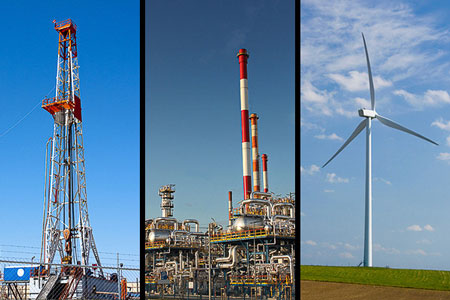 Weaning America off fossil fuels and investing in renewable energy is the best path for the future, say Stanford researchers.
Weaning America off fossil fuels and investing in renewable energy is the best path for the future, say Stanford researchers.
Oct 29th, 2012
Read more
Much more must be done to develop energy efficient cars, buildings and domestic appliances to address climate change - according to new research from the Tyndall Centre for Climate Change Research.
Oct 26th, 2012
Read more
University of British Columbia researchers have invented a safe, efficient technology to wirelessly charge electric vehicles using "remote magnetic gears" and successfully tested it on campus service vehicles.
Oct 26th, 2012
Read more
Researchers from the Technological, Environmental and Logistics Centre (TEC Ltd) in Slovenia have successfully transformed waste from paper mills into a product that can effectively soak up fuel from leaks or oil from spills.
Oct 24th, 2012
Read more
 A research team led by a scientist from UC Santa Barbara and supported by the National Science Foundation (NSF) has retrieved data from a sensor in Antarctic waters that survived the harsh polar winter. The information it gathered will provide critical baseline data on the changes in chemistry, or acidification, of those remote seas.
A research team led by a scientist from UC Santa Barbara and supported by the National Science Foundation (NSF) has retrieved data from a sensor in Antarctic waters that survived the harsh polar winter. The information it gathered will provide critical baseline data on the changes in chemistry, or acidification, of those remote seas.
Oct 23rd, 2012
Read more
 More carbon dioxide in the atmosphere, coupled with rising temperatures, is making rice agriculture a larger source of the potent greenhouse gas methane, according to a study.
More carbon dioxide in the atmosphere, coupled with rising temperatures, is making rice agriculture a larger source of the potent greenhouse gas methane, according to a study.
Oct 22nd, 2012
Read more
Residents of a new eco-development on the coast can better control and understand their energy usage, thanks to a system that allows outlets to communicate with each other through the power grid.
Oct 22nd, 2012
Read more
Green design does not necessarily mean comfortable design, reports a study by Cornell and Ithaca College ergonomists.
Oct 22nd, 2012
Read more
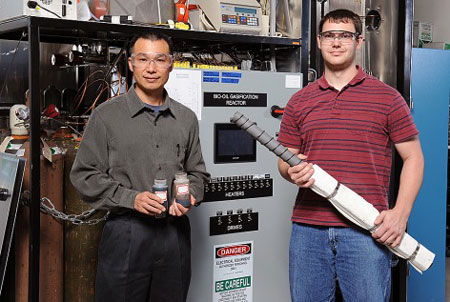 Iowa State University engineers Song-Charng Kong, left, and Nicholas Creager are studying a new bio-oil gasifier.
Iowa State University engineers Song-Charng Kong, left, and Nicholas Creager are studying a new bio-oil gasifier.
Oct 22nd, 2012
Read more
People are more likely to install a solar panel on their home if their neighbors have one, according to a Yale and New York University study.
Oct 19th, 2012
Read more
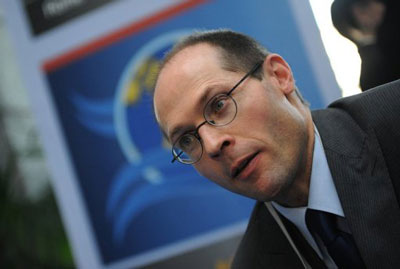 The European Union and the United States should stop using biofuels as they are hampering food production, the UN's special rapporteur for the right to food Olivier De Schutter says..
The European Union and the United States should stop using biofuels as they are hampering food production, the UN's special rapporteur for the right to food Olivier De Schutter says..
Oct 17th, 2012
Read more
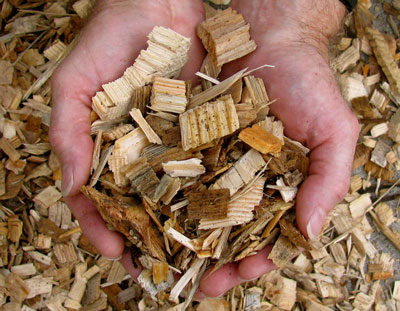 The new center, called CenSURF, short for Center for the Sustainable Use of Renewable Feedstocks, will receive $1.75 million over three years from the National Science Foundation.
The new center, called CenSURF, short for Center for the Sustainable Use of Renewable Feedstocks, will receive $1.75 million over three years from the National Science Foundation.
Oct 15th, 2012
Read more
The University of Maine and the U.S. Offshore Wind Collaborative (USOWC) have announced a partnership to co-develop WindHUB, USOWC?s new online resource for stakeholders interested in the emerging U.S. offshore wind industry.
Oct 15th, 2012
Read more
As fuel economy of new vehicles improved 18 percent over the past five years, billions of gallons of gas and billions of pounds of emissions have been saved, University of Michigan researchers say.
Oct 15th, 2012
Read more
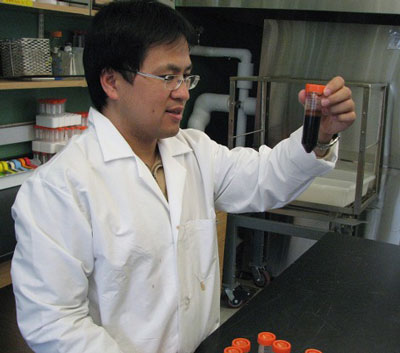 Microbes are working away in an Iowa State University laboratory to ferment biofuels from the sugar and acetate produced by rapidly heating biomass such as corn stalks and sawdust.
Microbes are working away in an Iowa State University laboratory to ferment biofuels from the sugar and acetate produced by rapidly heating biomass such as corn stalks and sawdust.
Oct 11th, 2012
Read more
Researchers from North Carolina State University have developed a new technique that allows users to better determine the amount of charge remaining in a battery in real time. That?s good news for electric vehicle drivers, since it gives them a better idea of when their car may run out of juice.
Oct 8th, 2012
Read more
 A new project of scientists at UCSB's National Center for Ecological Analysis and Synthesis (NCEAS) and partners aims to synthesize existing research on tipping points in marine ecosystems and conduct case studies to devise a set of early warning indicators and management tools that may help to predict, even prevent, threatened systems from falling off the precipice.
A new project of scientists at UCSB's National Center for Ecological Analysis and Synthesis (NCEAS) and partners aims to synthesize existing research on tipping points in marine ecosystems and conduct case studies to devise a set of early warning indicators and management tools that may help to predict, even prevent, threatened systems from falling off the precipice.
 Subscribe to our Cleantech News feed
Subscribe to our Cleantech News feed






